Are you searching for the answer to the question, How fast does a 100 mph fastball reach home plate? Then this is the article for you!
Welcome to the electrifying realm of baseball, where the crack of the bat and the roar of the crowd echo through the stadium. In this exhilarating journey, we embark on a quest to unravel the mysteries of one of the most captivating aspects of the game: the velocity of a 100 mph fastball as it hurtles towards home plate. So, buckle up and get ready for an adrenaline-fueled exploration into the heart of America's favorite pastime, where every split-second decision and every lightning-fast pitch can make all the difference between victory and defeat.
The Speedy Journey: How Fast Does 100 mph Fastball Reach Home Plate?
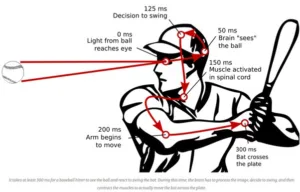 In the heart-pounding world of baseball, every moment is charged with anticipation and adrenaline. Nowhere is this more evident than in the lightning-fast journey of a fastball from the pitcher's hand to home plate.
In the heart-pounding world of baseball, every moment is charged with anticipation and adrenaline. Nowhere is this more evident than in the lightning-fast journey of a fastball from the pitcher's hand to home plate.
A Flash of Velocity
Picture this: a 100 mile per hour fastball released from the pitcher's hand, hurtling towards the plate with breathtaking speed. In a mere 400 milliseconds, the ball covers the distance from pitcher to catcher. To put this astonishing velocity into perspective, consider that it takes the average human eye between 300 to 400 milliseconds to blink. In the blink of an eye, the ball traverses the entire span from the mound to home plate, leaving hitters with a fraction of a second to react.
Split-Second Decision Making
As the ball rockets towards them, hitters face a daunting challenge - to swing or not to swing. With split-second decisions hanging in the balance, hitters must rely on lightning-fast reflexes and keen instincts. After the pitch is thrown, it takes the hitter's brain a mere 75 to 100 milliseconds to identify the ball in the air and process its trajectory. Meanwhile, the fastest swings in baseball take around 100 to 150 milliseconds to execute. This leaves hitters with a razor-thin window of approximately 150 milliseconds to make their choice. In the blink of an eye, they must assess the pitch, gauge its speed and trajectory, and commit to their course of action.
In this whirlwind of speed and precision, every millisecond counts. It's a test of skill, timing, and nerves as hitters strive to connect with the elusive fastball hurtling towards them at breakneck speed. And in the blink of an eye, the fate of the game hangs in the balance.
Calculating Speed and Distance: How Fast Does 100 mph Fastball Reach Home Plate?
 Velocity Calculation: A Formula for Speed
Velocity Calculation: A Formula for Speed
To calculate the speed of a fastball, we turn to the fundamental principles of physics. By measuring the time it takes for the ball to travel from pitcher to home plate and the distance covered, we can determine the velocity with remarkable accuracy.
Distance Traveled: A Game of Inches
From the pitcher's mound to home plate, the distance spans a mere 60 feet, 6 inches. Yet, within this seemingly short span, the ball accelerates to astonishing speeds, reaching its destination in the blink of an eye.
The Science Behind the Swing: How Fast Does 100 mph Fastball Reach Home Plate?
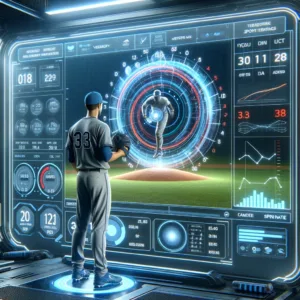 In the high-octane world of baseball, the art of hitting revolves around a delicate interplay of brainpower and physical prowess. As hitters step up to the plate, they embark on a thrilling dance with the incoming fastball, relying on their cognitive abilities and lightning-fast reflexes to make split-second decisions.
In the high-octane world of baseball, the art of hitting revolves around a delicate interplay of brainpower and physical prowess. As hitters step up to the plate, they embark on a thrilling dance with the incoming fastball, relying on their cognitive abilities and lightning-fast reflexes to make split-second decisions.
Brain vs. Ball
As the ball hurtles towards the plate at blistering speed, hitters engage in a battle of wits with their own minds. Visual processing, a complex cognitive process, comes into play as the brain rapidly analyzes and interprets the trajectory of the incoming pitch. With lightning speed, the brain deciphers the subtle cues embedded in the ball's flight path, determining whether it's a pitch to attack or one to let pass. For hitters to succeed in the high-stakes game of baseball, they must make split-second decisions driven by the brain's capacity to process visual information in real-time.
Lightning-Fast Reflexes
But it's not just mental acuity that separates the elite hitters from the rest. Hitting a 100 mph fastball requires lightning-fast reflexes and impeccable coordination. As the pitch hurtles towards them, hitters must seamlessly synchronize their body movements to execute a powerful swing in a matter of milliseconds. Every muscle fiber is finely tuned, every movement precise, as they unleash their swing with explosive force. It's a testament to the extraordinary athleticism of these athletes, who must combine mental sharpness with lightning-fast reflexes to conquer the challenges posed by the game's fastest pitches.
In this exhilarating clash of brain and brawn, hitters tap into the full extent of their cognitive and physical capabilities to master the art of hitting. It's a mesmerizing spectacle that showcases the sheer brilliance and athleticism of baseball's finest, as they strive to outwit and outmaneuver the opposing pitcher with every swing of the bat.
Unraveling the Speed: How Fast Does 100 mph Fastball Reach Home Plate?
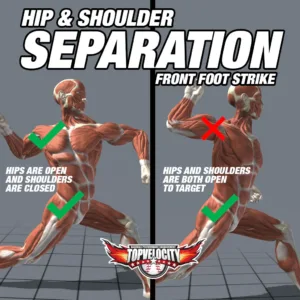 In the high-stakes world of baseball, mastering the art of pitching is a relentless pursuit of excellence. From the windup to the release, every aspect of the pitcher's mechanics is finely tuned to maximize velocity and efficiency. Let's delve into how the principles of 3X Pitching Mechanics revolutionize the journey of a fastball from the pitcher's hand to home plate.
In the high-stakes world of baseball, mastering the art of pitching is a relentless pursuit of excellence. From the windup to the release, every aspect of the pitcher's mechanics is finely tuned to maximize velocity and efficiency. Let's delve into how the principles of 3X Pitching Mechanics revolutionize the journey of a fastball from the pitcher's hand to home plate.
Separation-Timing: Precision in Motion
At the heart of 3X Pitching Mechanics lies separation-timing, a critical component that sets the stage for explosive velocity. This concept measures the synchronization between peak hip rotation and peak shoulder rotation during the pitching delivery. High-velocity pitchers achieve optimal separation-timing by peaking in hip rotation around 27-35% of the throwing phase and in shoulder rotation at 47-60%, creating a window of separation timing around 20-25%. This precise timing not only enhances velocity but also reduces the risk of injury by promoting a more efficient distribution of workload throughout the body.
Triple Extension Separation: The Power of Extension
Triple extension separation, or 3X, serves as the cornerstone of velocity enhancement in pitching. It involves the extension of the ankle, knee, and hip flexor just before the front foot strike, unleashing a surge of power that propels the hips to rotate at a higher rate post-landing. This explosive motion, when executed with precision and power, translates to increased hip-to-shoulder separation and ultimately, higher velocity. The correlation between leg drive or 3X and wrist velocities underscores the pivotal role of this technique in maximizing pitch speed.
 3X Ankle Kick: Activating the Powerhouse
3X Ankle Kick: Activating the Powerhouse
The 3X ankle kick is a fundamental element in achieving triple extension and harnessing the full potential of the pitching delivery. It involves the activation of the calf muscle as the ankle extends during the stride, culminating in peak muscle activation just at the front foot strike. Research indicates that the 3X ankle kick is closely tied to ground reaction forces and pitching velocity. By mastering this technique through proper coaching and training, pitchers can unleash the explosive power needed to drive velocity to new heights.
Force Vector: Channeling Power
In the realm of 3X Pitching Mechanics, the force vector emerges as a guiding principle for generating maximum power and velocity. It refers to the direction of ground reaction forces created by the drive leg and landing leg during the pitching delivery. By aligning these forces in the optimal direction, pitchers can amplify their power output and propel the ball towards home plate with unparalleled speed. Mastering the force vector requires meticulous programming and training, but the results speak for themselves - greater velocity, enhanced performance, and a competitive edge on the mound.
Arm Action: Fluidity and Precision
The final piece of the puzzle in 3X Pitching Mechanics is arm action, the graceful movement of the throwing arm and hand throughout the delivery. Proper arm action is essential for maximizing velocity while minimizing the risk of injury. In the 3X system, arm action is characterized by a smooth and efficient path from separation to release, with a relaxed and fluid motion that enables the transfer of maximum energy from the lower body to the arm and hand. Through dedicated practice and guidance from the 3X Pitching Velocity Program, pitchers can refine their arm action to unlock their full potential and dominate the game with blistering fastball speeds.
In conclusion, 3X Pitching Mechanics represent a paradigm shift in the world of baseball, offering pitchers a scientific approach to unlocking their velocity potential. By mastering the principles of separation-timing, triple extension separation, 3X ankle kick, force vector, and arm action, pitchers can elevate their performance to new heights and leave hitters in awe of their lightning-fast pitches.
3X Velocity Camp: How Fast Does 100 mph Fastball Reach Home Plate?
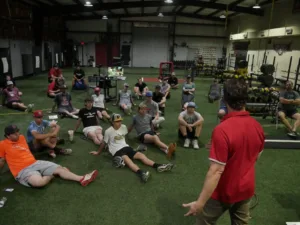 Are you ready to take your pitching game to the next level? Look no further than the 3X Velocity Camp, where aspiring pitchers come to unlock their full potential and unleash their inner power on the mound.
Are you ready to take your pitching game to the next level? Look no further than the 3X Velocity Camp, where aspiring pitchers come to unlock their full potential and unleash their inner power on the mound.
Elevate Your Performance
At the 3X Velocity Camp, we're committed to helping pitchers achieve their goals and surpass their limits. Our innovative approach, rooted in the principles of 3X Pitching Mechanics, focuses on maximizing velocity, improving efficiency, and reducing the risk of injury. Whether you're a seasoned pro or just starting out, our expert coaches will tailor a personalized training program to suit your needs and propel you towards success.
Train Like a Pro
Join us at the 3X Velocity Camp and immerse yourself in a world of elite training facilities, cutting-edge technology, and top-notch instruction. From advanced biomechanical analysis to specialized strength and conditioning exercises, our comprehensive training regimen covers every aspect of pitching mechanics, ensuring that you leave no stone unturned in your quest for greatness.
Take the Next Step:
Don't let another season pass you by without reaching your full potential. Sign up for the 3X Velocity Camp today and take the first step towards unlocking your true pitching prowess. Visit topvelocity.net/3x-camp to learn more and reserve your spot today. Your journey to greatness starts here.
FAQs: How Fast Does 100 mph Fastball Reach Home Plate?
Welcome to the electrifying realm of baseball, where the crack of the bat and the roar of the crowd echo through the stadium. In this exhilarating journey, we embark on a quest to unravel the mysteries of one of the most captivating aspects of the game: the velocity of a 100 mph fastball as it hurtles towards home plate. So, buckle up and get ready for an adrenaline-fueled exploration into the heart of America's favorite pastime, where every split-second decision and every lightning-fast pitch can make all the difference between victory and defeat.
1. How is the speed of a 100 mph fastball calculated? To calculate the speed of a fastball, we rely on fundamental principles of physics. By measuring the time it takes for the ball to travel from the pitcher's hand to home plate and the distance covered, we can determine the velocity with remarkable accuracy.
2. What is the distance a fastball travels from the pitcher's mound to home plate? The distance from the pitcher's mound to home plate spans a mere 60 feet, 6 inches. Within this seemingly short span, the ball accelerates to astonishing speeds, reaching its destination in the blink of an eye.
3. How do hitters make split-second decisions when facing a 100 mph fastball? Facing a 100 mph fastball requires lightning-fast reflexes and keen instincts. Hitters must rely on their brain's ability to rapidly analyze and interpret the pitch's trajectory, coupled with seamless coordination to execute a powerful swing in a matter of milliseconds.
4. What are 3X Pitching Mechanics and how do they impact velocity? 3X Pitching Mechanics are a revolutionary approach to pitching that focuses on maximizing velocity, improving efficiency, and reducing the risk of injury. By mastering principles such as separation-timing, triple extension separation, and force vector, pitchers can elevate their performance to new heights.
5. How can I unlock my pitching potential with the 3X Velocity Camp? The 3X Velocity Camp offers aspiring pitchers the opportunity to unlock their full potential and unleash their inner power on the mound. With expert coaching, cutting-edge technology, and personalized training programs, participants can elevate their performance and take their pitching game to the next level.
6. Where can I learn more and sign up for the 3X Velocity Camp? Visit topvelocity.net/3x-camp to learn more about the camp and reserve your spot today. Don't miss out on the chance to elevate your pitching game and embark on a journey towards greatness.
In the electrifying world of baseball, every pitch, every swing, and every moment is an opportunity to showcase the extraordinary talent and athleticism that define the game. Join us as we delve deeper into the science, the mechanics, and the sheer excitement of America's favorite pastime.
For more exclusive content visit the TopVelocity Patreon!


 Velocity Calculation: A Formula for Speed
Velocity Calculation: A Formula for Speed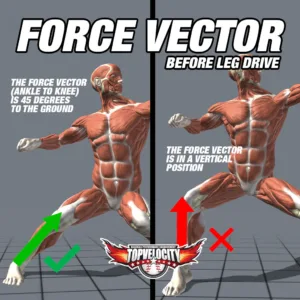 3X Ankle Kick: Activating the Powerhouse
3X Ankle Kick: Activating the Powerhouse

